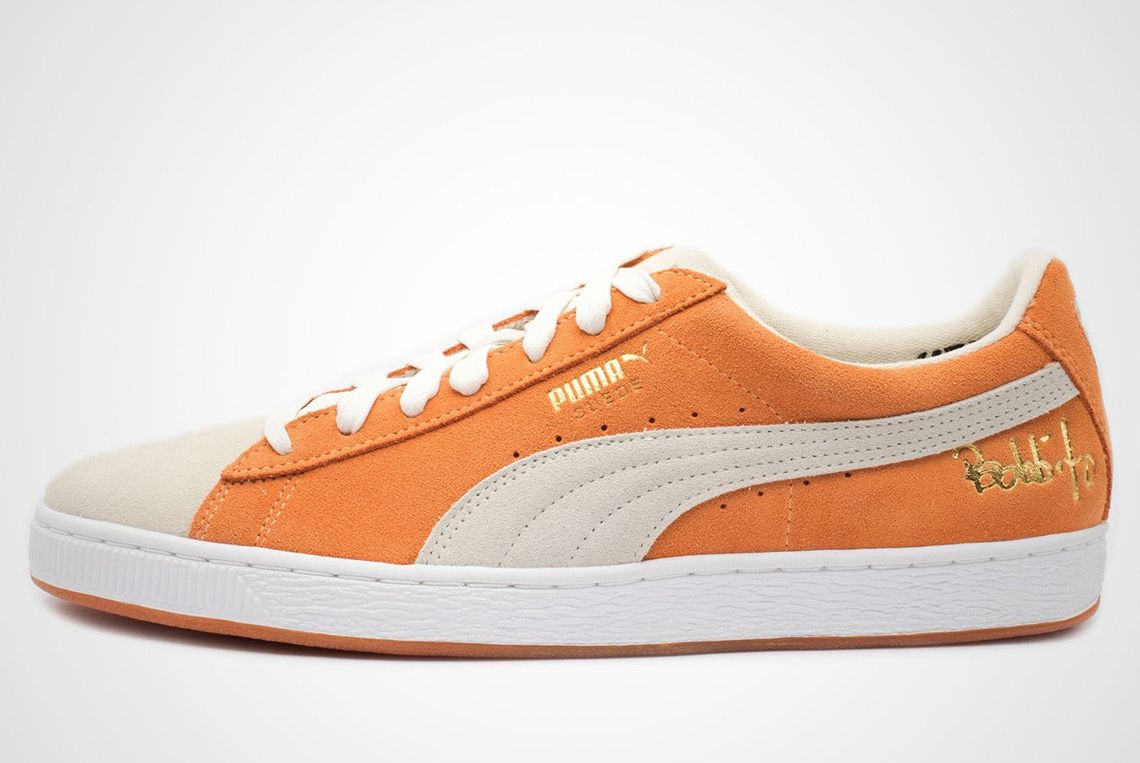Heidi Wong
Shoe, Shoo, Shew - Lesson Plan
This lesson plan consists of three activities that help students think about how form affects the function of an object, using shoes as an example. It can be used in areas of studies like visual arts or family studies. The educational activities can take place within a classroom setting. However, a visit to the Bata Shoe Museum, to see the shoes that will be discussed or to find inspiration for the studio activity, can enrich the student's learning.
Age Group: Gr. 9-12
Materials:
- Image of Puma Suede shoe
- Image of Cryptokicks
- Clay
- Lego
- Collage materials
- Cardboard
- Digital Software (Photoshop, Illustration, Blender, etc)
- Digital Camera
- Scanner
| 🎯 Learning Goals | ✅ Success Criteria (I can...) |
|---|---|
|
|
|
|
|
|
Activities
Puma Suede - Think, Pair, Share
(5-10 minutes)
✅ Establish the idea that most shoes are created for the purpose of being functional,
practical, and perhaps stylish.

Guidelines *Consult sources found in the Teacher Resource or information noted in this lesson plan.
- Introduce the exhibition Obsessed.
THINK
Pose the following two questions to your class:
- What materials is this shoe made of?
- Why is this shoe important?
Group students into partners or small groups of 3-4 depending on class size and have them share their responses with each other.
SHARE
After students have shared their thoughts, open the discussion to the class. As the teacher, provide context regarding the shoe. This information can be found in the Teacher Resource and is noted below.
What materials is the shoe made of?
- Synthetic leather
- Suede leather
- Gold Metallic Foil
- Rubber
Why is this shoe important?
- Released to the public in 1968, the Puma Suede became an icon in sport, style, and music.
- Functional shoe that offered style and some degree of personalization.
- Partnership with Bobbito Garcia celebrates the 50th year since this shoe's release.
Cryptokicks - Critical Analysis
(15 minutes)
✅ Transition from the idea that shoes are created for practicality to objects of collection and
commodification.
✅ Establish how materials can affect the economic value of an object.
Guidelines *Consult sources found in the Teacher Resource or information noted in this lesson plan.
1. Introduce the exhibition Future Now.
2. Explain to student what a critical analysis is.
- It helps us look at art objects in a more objective manner.
- It consists of four stages: describe, analyze, interpret, and evaluate.
3. Pose some or all of the questions to your class following this process.
4. While going through each stage, provide students with additional information for context
and to spark more ideas.
- Users can design and mint their own NFT sneakers through Cryptokickers.
- Digital wearables and collectibles have an ever-expanding market, bring in billions of dollars.
DESCRIBE
- What colours do you see?
- What shapes do you see?
- What is the size of the shoe?
- What does it feel like?
ANALYZE
- How does the material affect the object?
- How does the shoe evoke feelings, ideas, and images?
- What does the shoe or certain elements of the shoe remind you of?
INTERPRET
- What is the message or meaning behind the shoe?
- What is the purpose of this shoe?
- How does your interpretation of the shoe differ from others?
EVALUATE
- Where and when was the work created?
- Does the shoe address wider social, historical, or political topics?
- What questions does it raise about the purpose of the shoe?
- What is the significance of the shoe in culture or society?
Studio Activity
(1 hour or more)
Materials: clay, lego, building blocks, collage materials, digital software, digital camera, scanner
*Note these materials are considered suggested materials. Feel free to add or subtract. Options are endless.
Guidelines *Consult sources found in the Teacher Resource or information noted in this lesson plan.
- Students are to create a shoe that communicates a personal narrative.
- They can use found materials, digital software, or a combination of both!
- The shoe can be three-dimensional or simply a representation of one - two dimensional.
- To find inspiration, visit the Bata Shoe Museum in person or view image from their current and online exhibitions.
- After completion, students are to share their work and explain their concept.


Hi Heidi, I think your ideas here communicate all the themes you want to cover which is great, however you may want to tighten up your tour/studio activity with including more direct questions that relate to the shoes you chose. Or perhaps a smaller age range
ReplyDeleteex. gr.9/10 or gr.11/12 instead so there is a clearer focus. Hope this helps!